Herculean task ahead to shield New York from rising waters
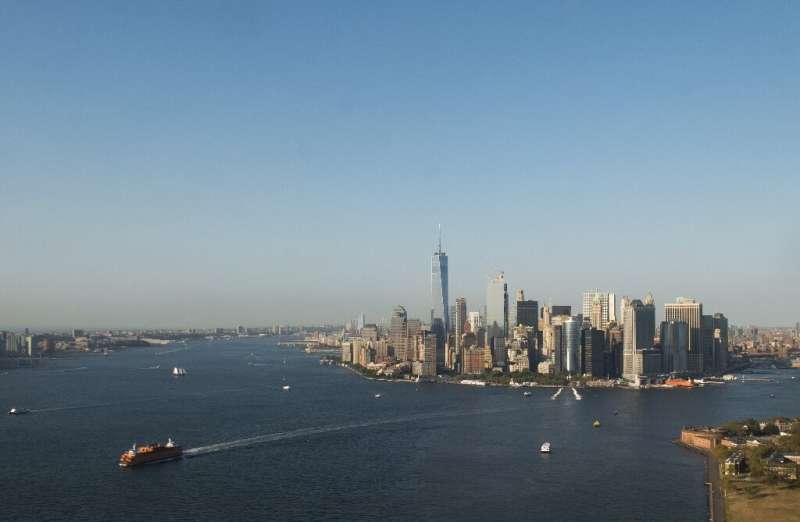
New York is bracing for the rising sea levels that climate change will bring, and preparations have already begun—but the long-term costs of adapting to a warmer, wetter world are expected to be astronomical.
Protective barriers made of sand have appeared in Manhattan and Brooklyn, with man-made dunes dotting the most exposed beaches, as New York seeks to be a pioneer in the field of climate change adaptation.
But that is only the start of a long and staggeringly expensive fight to hold back the water.
After Hurricane Sandy struck in 2012, leaving 44 people dead and inflicting $19 billion (17 billion euros) worth of damage, New Yorkers are in little doubt about the destruction climate extremes can bring.
But moving away from the shoreline is almost inconceivable in such a densely populated space, where real estate prices are sky high.
Instead, the city has prioritized fortifying its 525 miles (850 kilometers) of coastline as surrounding waters are projected to rise as much as six feet (1.8 meters) by 2100, and the threat of severe storms increases.
In two areas particularly battered by Sandy—the Rockaway Peninsula, in the southeastern area of Queens, and Staten Island, the city's southernmost borough—nearly 10 miles of sand dunes have already been created, and millions of tonnes of new sand have been dumped on beaches in the Rockaways and at Coney Island, in Brooklyn.
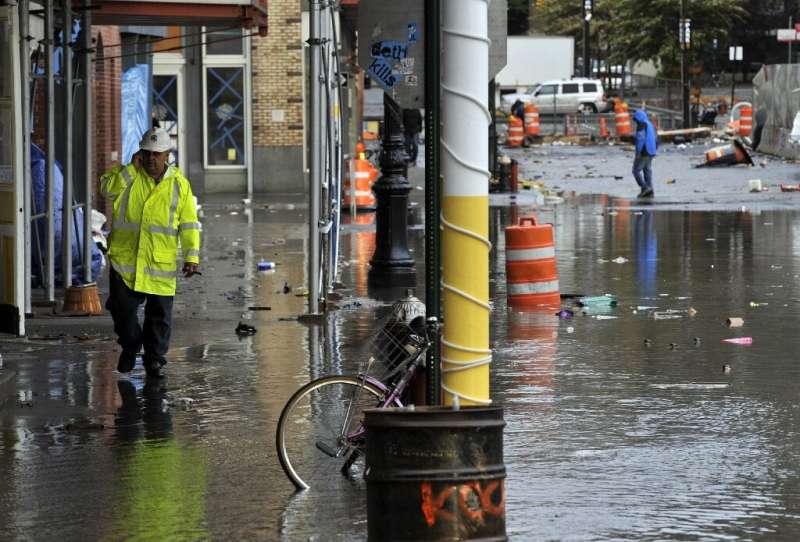
Several billion dollars have been shelled out to protect the city's electricity infrastructure and its aging subway system, tasked with transporting the 8.5 million people who live in the city, plus its visitors and commuters, every day.
Walls made of sand-filled containers have appeared throughout the city, especially in Brooklyn and near Wall Street in Manhattan—the four-foot (1.2 meter) tall barriers are a temporary fix, expected to last for five years as New York's historic and financial heart waits for more lasting protection.
According to official projections from the city's Economic Development Corporation, 37 percent of buildings in Lower Manhattan will be at risk of storm surge by 2050 and 20 percent of area streets could face daily flooding by 2100.
Up to $120 billion
And the most ambitious parts of the job have not yet even begun: the city plans to launch a project next year to raise up the East River Park in Lower Manhattan over three years.
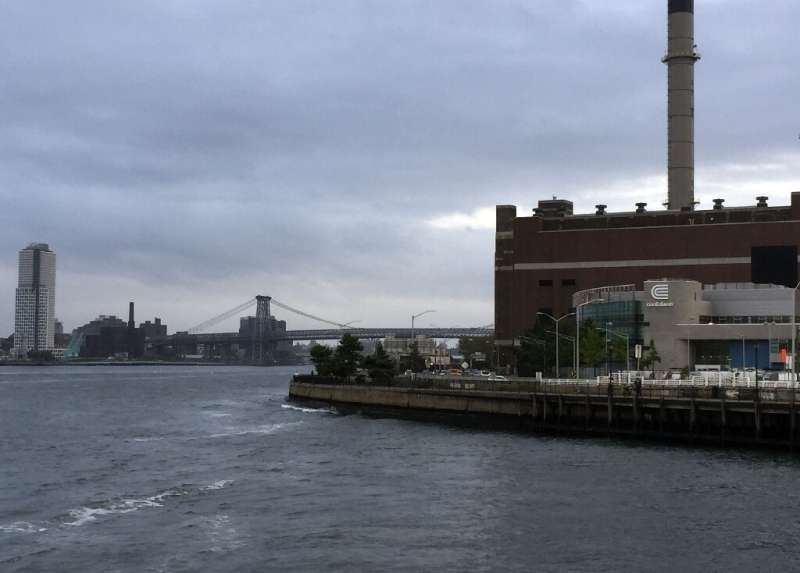
Democratic Mayor Bill de Blasio also unveiled a plan in March to protect the southern tip of Manhattan, where 10 percent of the city's jobs are located.
The Lower Manhattan Coastal Resiliency Project would extend the southern tip of the island by 500 feet (150 meters)—or two city blocks—into the East River.
The expanded portion of land would "absorb the energy of the storm" as future gales threaten the city, explained Stephen Cohen, an environmental policy expert at Columbia University's Earth Institute.
But such a venture would take years and could cost up to $10 billion—and it is unclear where the funding would come from.
Beyond local projects, the US Army Corps of Engineers is also examining plans for the entire New York region.
One of their most expensive—and least likely—ideas up for consideration in 2020 is to construct a $120 billion-system of underwater storm surge barriers for the entire New York waterway.
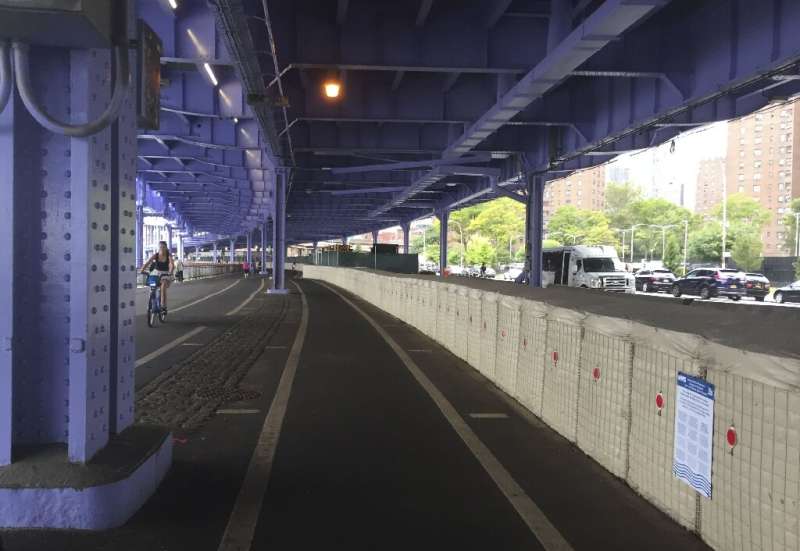
The scheme could reduce flood risk by 92 percent, but could pose threats to the ecosystem.
Or, for $15 billion, the agency could build a series of perimeter defenses that would not include the underwater barriers.
But opting for that more conventional plan would mean only a 25 percent reduction in the risk of flooding.
'Wake up'
Any solution will be expensive and time-intensive, with the city warning the $20 billion initially proposed to tackle the problem is a mere down payment. That has some New Yorkers worried.
"Seven years after Sandy, we are still talking about sandbags as our main defense against major storms," lamented Councilman Justin Brannan, who represents a coastal area of Brooklyn and presides over the city's Committee on Resiliency and Waterfronts.
"We need to wake up before tomorrow is too late," Brannan said.
-
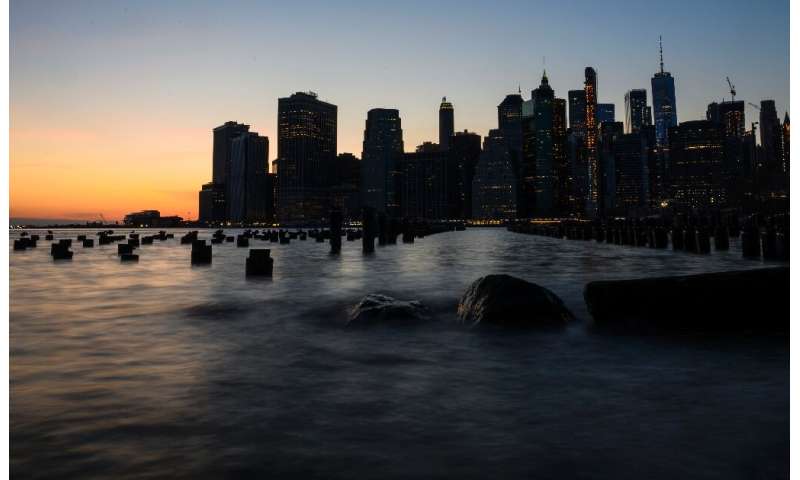
According to the city's official projections, 37 percent of buildings in Lower Manhattan will be at risk from storm surge by 2050 -
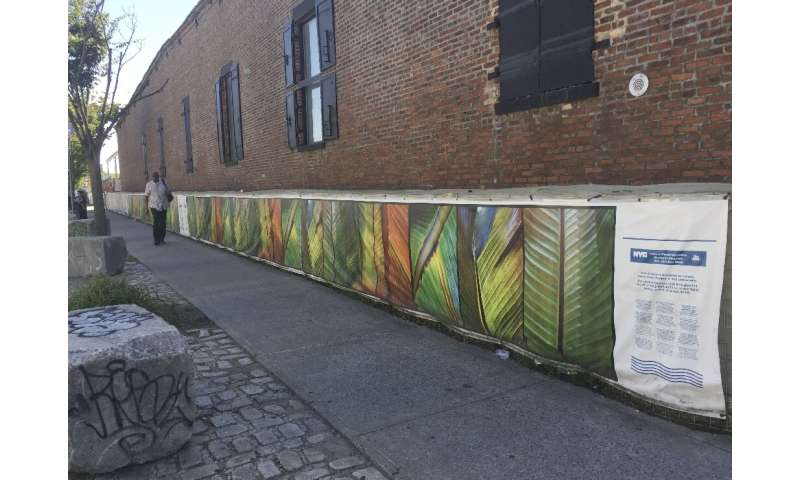
A temporary sandbag wall, seen in Red Hook, Brooklyn, was painted by an artist -
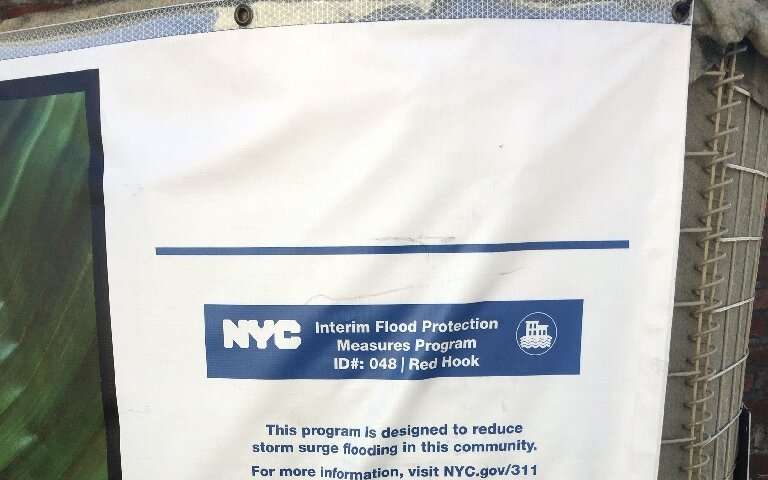
A sign on a sandbag wall from the city of New York informs residents that "Interim Flood Protection Measures Program" is meant to "reduce storm surge flooding in this community"
"There is a huge gap between what the city of New York has been able to do and what needs to be done," said Roland Lewis, president of the New York coastal advocacy NGO the Waterfront Alliance.
"We are one of the great cities of the world, we are very wealthy, but nonetheless, we are not able to protect ourselves right now from a new reality."
Like many New York leaders, Lewis bemoans the "huge vacuum" on the federal level of the conversation.
He complains that President Donald Trump's climate-skeptic administration is not financially contributing to the city's efforts—and in some ways is "working actively in the wrong direction" by scrapping rules intended to reduce greenhouse gas emissions.
Despite these concerns—and the potential for catastrophe if another hurricane strikes before protective work is finished—Columbia University's Cohen remains optimistic.
"Of course, people would have rather seen this more rapidly," he said. "You are still better off making it right than making mistakes."
© 2019 AFP

















